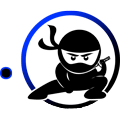So… Companies won’t actually work on vaccines unless they get a patent on that virus or the work for that, which speaks a lot about the world we live in (evil). The CoronaVirus, generally refers to a family (Coronaviridae) of single-stranded RNA viruses that have a lipid envelope studded with club shaped projections. It can infect birds, many mammals, and humans. It is what caused MERS, SARS, and now COVID-19. SARS occurs then MERS which brought up questions by many because dutch scientists patented the virus. The scientists seem to have been freely giving the virus to anyone that’s makes the request but is having to make a request first part of the problem? Read More…
Why would you want to exclude others from finding vaccines to viruses that can kill?
- Moving on I find that there is a patent for SARS. Click here… which is owned by Chiron Corporation who were later acquired by Novartis.
 I find a company named Labrador Diagnostics LLC, who, I don’t know, do nothing?… Nothing but file a lawsuit to stop the making of Covid-19 tests. They even hired Irell & Manella to represent them who literally (or tried to represent) represented a monkey in a copyright infringement case over a monkey selfie image….lol
I find a company named Labrador Diagnostics LLC, who, I don’t know, do nothing?… Nothing but file a lawsuit to stop the making of Covid-19 tests. They even hired Irell & Manella to represent them who literally (or tried to represent) represented a monkey in a copyright infringement case over a monkey selfie image….lol- So a case Labrador Diagnostics LLC v. BioFire Diagnostics, LLC et al actually happened and was filed on March 9th
- Labrador owns two patents: 8,283,155 and 10,533,994
 The two patents are owned by Elizabeth Holmes and the assignee is listed as Theranos IP Co LLC. When you look up Theranos you see they shut down over a non-working medical testing equipment scandal.
The two patents are owned by Elizabeth Holmes and the assignee is listed as Theranos IP Co LLC. When you look up Theranos you see they shut down over a non-working medical testing equipment scandal.- Yet in 2018, they sold their patents to Fortress Investment Group.
Why would this business want to even be bothered?
I mean they are an investment firm. Do you see the pattern here????? Also something to consider, they are a division of Softbank who I know as a Japanese cellphone company who owns a large stage in Sprint. Yeah do research on them and you find they own stakes in a lot of different areas like Sprint, Uber, Yahoo, and Fanatics. So some common sense here tells me that Fortress is just some patent troll company for Softbank to hide behind. I did see that in 2017 Fortress was bought by Softbank for $3.3 billion so I assume they did not start out that way. If you don’t believe me you can ask Apple and Intel. I am sure they will have a lot to say in the matter.
Excerpts of Apple and Intel’s complaint
Patent trolling is largely a thing bringing in a lot of money for some while also hindering science and causing a lot of money lost on litigation. Some of the details of the complaint I will just quote out:
Rather than promote the progress of science and useful arts, patent assertion entities (“PAEs”), including Defendants, that aggressively pursue meritless litigation have long been recognized to harm and deter innovation. For example, one study estimated that patent litigation brought by PAEs in the United States resulted in expenditures of $29 billion in 2011 for licensing fees, legal fees, and other costs of responding to PAE litigation. Another study found, by looking at the impact on stock price, that lawsuits by PAEs from 1990 through 2010 were responsible for the defendants losing half a trillion dollars. And those losses are not offset by corresponding gains to patent holders that promote innovation.
Of course as years go by people evolve and find new ways:
In the face of these challenges, PAEs have evolved. PAEs have increasingly been partnering with investment firms to fuel their litigation. This trend is part of a larger trend in the growth of third-party investment in litigation generally. Although the precise scale of investment in litigation is unknown, estimates put it in the tens of billions of dollars.8 As one example, the largest litigation investor reported having investments of $2.8 billion in 2019.
Having deep-pocketed investment firms standing behind them has made PAEs only more aggressive. Indeed, to meet the expectations of their new investors for high returns, PAEs must act ever more aggressively. These new investors are content to incur loss after loss so long as they have the chance to hit a windfall reward that will justify their investment. Patent assertion thus becomes simply a numbers game disassociated from the merits of the underlying patents, with PAEs and their investors betting that serial assertions with aggressive demands will strike a jackpot eventually making up for many other losses. Consistent with this strategy, while the overall level of patent litigation may be declining, assertions by non-practicing entities are increasing.
Here we go this part here about Fortress:
central player in this emerging investment strategy is Fortress Investment Group LLC (“Fortress”). Fortress is an investment firm that went public in 2007. Fortress’s shares traded at over $35 per share after going public, but one decade later, Fortress was struggling with poor returns and its share price had plummeted to around $5 per share in 2017. Fortress was acquired that year by SoftBank Group Corp. (“SoftBank”) for $3.3 billion. Fortress contends it is “a leading, highly diversified global investment manager”11 and claims to have approximately $39.2 billion of assets under management as of March 31, 2019. One way in which Fortress has tried to turn around its performance and justify SoftBank’s investment in it is through increased speculation on patent assertions.
This next part I had to quote out. I had to think about it at first because it uses the acronym PAE which I did not know its meaning so I looked it up and found a hell of a lot of possible meanings (acronyms), but one made sense, Patent Assertion Entities, which are businesses that acquire patents from third parties and seek to generate revenue by asserting them against alleged infringers.
Intel and Apple bring this complaint to end a campaign of anticompetitive patent aggregation by Fortress and a web of PAEs that Fortress owns or controls. Fortress has used its stable of PAEs to aggregate a massive portfolio of patents that purportedly read on high-tech consumer and enterprise electronic devices and components or software therein and processes used to manufacture them. By employing a network of PAEs that it either owns or controls, Fortress has created a web of entities that obscures Fortress’s puppeteering role in this scheme. Rather than enhancing efficiency, Fortress uses aggregation to undermine it by creating a structure in which Fortress and its PAEs benefit by asserting weak patents—i.e., those that never would have been asserted by their former owners—in order to stretch the resources of their targets and increase the possibility that those weak patents will improperly be found valid and infringed or the prospect that a target (like Intel or Apple) will agree to a license to resolve the threat posed by Fortress and its PAEs. Thus, rather than promoting the procompetitive benefits of the patent system by increasing innovation and output, Fortress’s scheme has the opposite effect. Fortress and its PAEs acquire and seek to monetize meritless patents that never would have been asserted by their original owners, imposing a tax on the electronics industry that increases prices, decreases output, and ultimately harms consumers. To the extent that Fortress and the other Defendants have patents that would actually be of value to potential licensees, the transfer of those patents to Fortress’s control limits access to them because those patents are now held by entities that have no incentive to license patents in a way that captures royalties that are commensurate with their actual value. Instead, those entities have incentives to obtain excessive monopoly rents by exploiting patent portfolios that aggregate any valuable patents with many meritless patents.
I will just quote more from the complaint it is actually a good, clearly stated read. You know usually it is hard to understand what is said in many legal documents.
Through its anticompetitive aggregation scheme, Fortress has engaged in anticompetitive conduct by creating a portfolio of patents that purportedly read on electronic devices and components or software therein and processes used to manufacture them that allows it to charge far more than the value of the inventive contributions (if any) of the patents and of competitive prices for licenses. Fortress and its PAEs seek to use that ill-gotten power to extract and extort exorbitant revenues unfairly and anticompetitively from Intel, Apple, and other suppliers of electronic devices or components or software for such devices and ultimately from consumers of those products. Fortress’s aggregation is thus intended for an anticompetitive purpose—to invest in patents at costs lower than the holdup value of the patents to ensnare as many potential licensees as possible and to allow it and the other Defendants to assert as many possible claims of infringement to tax the commercial use of existing technology at rates beyond the actual value (if any) of the aggregated patents.
In furtherance of the anticompetitive scheme, Fortress and the other Defendants have deployed patents in waves of lawsuits against their targets without regard for the merits of the claims. Rather than licensing and litigating based on the merits of the patents, Fortress and its PAEs operate based on volume and repetition, targeting the resolve of the targets instead of establishing the merits and value of the patents. Given the size of the portfolio, Fortress and its PAEs can deploy patent after patent in case after case against their targets with the threat of ever more patent assertions and ever more litigation. Faced with this threat, many victims have agreed to settle, rather than to challenge Fortress and its PAEs, for amounts that reflect not the merits of the underlying patents but the effectiveness of the Fortress model. Thus, Fortress and the other Defendants foreclose the possibility—which existed before aggregation—that litigation can be an economic alternative to licensing patents.
If you want to read more you can just download it here.







